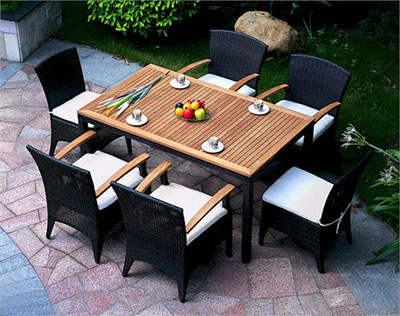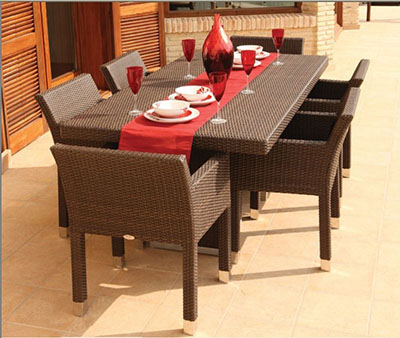Under appropriate conditions, contract packers can work with digital printers to help consumer product manufacturers reduce the risk and cost of overstocking new products.
For those consumer product (CPG) producers seeking to bring their new products to market quickly, the joint effort between contract packers and digital printers will be a successful combination.
“Outsourcing printing to short-run digital printers allows us to say 'YES' to customers who need a small amount of packaging or labels in a short time,†said Allen Petrie, vice president of Star Packaging. The company is a contract wrapper in Whitewater, Wisconsin.
For cooperation with digital printers, Petrie explains: “CPG producers generally look for high-quality, attractive retail packaging to test the market or sample in order to obtain the necessary sales for their sales personnel. The data is another use for the release of new products at packaging exhibitions. In these cases, usually only a small amount of packaging samples are needed, and sometimes even only one sample is needed. At this time, choosing digital printing will greatly reduce costs.
Digital printing options
Before knowing digital printing, consumer product manufacturers were either forced to pay for the cost of printing thousands of new or tested packages or labels using traditional technologies, or were forced to spend hours manually mimicking actual packaging.
Compared with other methods that can produce a small amount of packaging, digital printing can achieve higher color accuracy. The packaging pattern is printed on the same printing material as conventional production. Digital printing technology allows consumer product manufacturers to get the same quality packaging or sales samples, prototypes or free gifts as actual mass production, any number, any time.
Unlike high-cost traditional printing, short-run digital printing can be an insurance method to prevent older products full of warehouses from exceeding the contractor's storage capacity. In addition, consumer product manufacturers do not want to bear unnecessary excess inventory costs in testing market activity.
"For those customers who trade with the industry's retail giants, launching a product that looks and feels immediately removed from the shelf by customers is a competitive advantage they desperately need, and this is exactly what digital printing can do. Provided.†Petrie said.
Digital printing is obtained from the computer directly to the printing, so the printer can complete the printing job within a few hours. Digital printing is mainly used for short editions. The general number is from 1 to 8000 pieces. Digital printing can save up to half the cost of conventional printing, depending on variables such as quantity and color number.
Digital printing is "unprinted," which means that a four-color package or label is the same process and cost as a two-color process. This process can enable consumer product manufacturers to save costs while also ensuring the consistency of complex, high-quality product designs.
When to use digital printing?
One of the major misconceptions about digital printing is that manufacturers only look at costs without regard to use. If a CPG company produced 100,000 labels with traditional printing at a price of 5 cents, but actually used only half, then the actual cost of each label is 10 cents, and the company also has to label a warehouse. Store and manage.
At the same time, digital printing is not a universal solution that can be applied to any occasion. Whether or not you want to "digitalize" depends on how many products you need and how fast you need to complete them. If a CPG company contracted by a contractor needs 10,000 labels and has four weeks to print, traditional printing may be a more appropriate solution.
When a CPG company reviews contract packer capabilities and their links with partners in the supply chain in the industry, if a contract packager can learn more about digital printing, then it will have a little more than other competitors. The advantages.
“For contract packagers, it is important to recognize and master the benefits of working with professional short-run digital printers,†says Petrie. “How to improve the quality of digital printing and how to use it at a lower cost and risk? Products are delivered to the shelf faster, and these packers can share relevant experiences with their customers.†In return, digital printers can also get help from contract packers on closing jobs, such as manual assembly and shrink packaging. , surface packaging, automatic bagging and manual inspection.
High value-added niche market
Digital printing can add value to CPG companies in another way because they work with contract packagers. They can realistically consider entering smaller niche markets, and in the past they would have to enter these niche markets because of the cost limitations of traditional printing methods. CPG can now connect with smaller specialized service providers to produce products with its own characteristics.
We can use the beverage company mentioned in the second point in the supplementary report below as an example. A CPG company requires different labels for 10 different specialty stores for 20-ounce soda bottles, and these labels are also in numbers. The printing press prints on the same roll of paper. Since several stores may only need 500 or 1,000 labels, it is not economical to use traditional methods to print these labels. What digital printers do is effectively group different orders together. When the growth version comes alive, this long version may contain 1,000 labels of a certain version, 1500 versions of another, and then 500 custom-made soda tags. As a result, CPG companies are now able to serve the market very effectively and at the same time they can also enjoy increased profits.
“Digital printing provides contract packers’ customers with the ability to produce products based on the needs of their customers, not the gentleman who produces the products and wants them to buy them,†Petrie said. “Our customers need to be able to New products are shown to retailers (the new products look and feel like traditional new products), get feedback from the latter and make minor changes to the packaging, and then digitally display the differences in their products The version, the time required for the entire process is 100% controllable.
With digital printing, it is possible to get the desired package within two hours, although this time is usually one to four working days. The original question was to determine what kind of situation should be used for traditional printing, and what kind of situation should be used for digital printing. Now it is to determine the degree of digital printing required for rapid packaging.
Digital Printing Application Example
Here are two examples of how CPGs can benefit when contractors collaborate with digital printers.
1. A beverage company conducts a survey on the entry of a beverage for toddlers into the market through actual home use tests. The goal of the beverage company is to determine which taste and capacity are the most attractive to consumers, and what kind of lids consumers feel are the most convenient and easiest to use. Short-run printing specialists produce corresponding labels for a variety of flavors and capacities—two each with a capacity of 3,000, and then together with shrink-wrapping, deliver the labels to contract packers. The contract packager carries out the following tasks - labeling, filling the product, covering the bottle with a normal lid or a sports lid, and packaging it in shrink packs in groups of four bottles. The appearance of this product makes it easy for customers to take it off the shelf. It can be used for market testing.
2. Another beverage company needs a sample of a new type of low-sugar soft drink. The required packaging is a 2-liter bottle and a 20-ounce bottle. These samples will be sold through a network of sales representatives and brokers whose goal is to secure favorable shelf positions for these samples at major retail locations. The digital printer printed, compounded and slitted 15,000 film labels of suitable widths on one large roll. Finally, the labels are sent to the contract packager who attaches the labels to the bottles and then transports the bottles to the above-mentioned sales network.
Source: International Packaging Business
Our Rectangle Patio Dining Set has a relaxed, southern attitude, intricately handwoven in UV resistant resin wicker. You'll enjoy alfresco meals more as you unwind in thickly cushioned dining chairs. The smoothly woven rectangular patio dining table comfortably hosts up to six guests.You can choose different size and color to decorate your dining and garden.
-Handwoven premium resin wicker
-UV-protected, antimicrobial
-Rust-resistant powdercoated frames
-Cushions included
-100% waterproof polyester fabrics
-All-weather cushions have a high-resiliency foam core wrapped in plush polyester
-Table-top with tempered glass
-Assembly required on table
-polyethylene rattan: it's non-toxic and safe for the environment. It's also antimicrobial, a quality that prohibits the growth of fungus and mildew. The wicker won't splinter or rot in extreme temperatures (-94°F to 176°F), making our furniture an excellent choice for almost any climate.


If you have any questions, please contact with us directly. Rectangle Patio Dining Set are produced
by Golden Eagle Outdoor Furniture With High Quality and Good Appearance. Welcome you can visit our Factory. For any inquiry,Please send mail directly to us.
Welcome your inquiry for further discussion.
Rectangle Patio Dining Set
Rectangle Patio Dining Set,Rattan Rectangle Dining Set,Wicker Rectangle Dining Set,Outdoor Rectangle Dining Set
Golden Eagle Outdoor Furniture Co., LTD. , http://www.geoutdoor.com